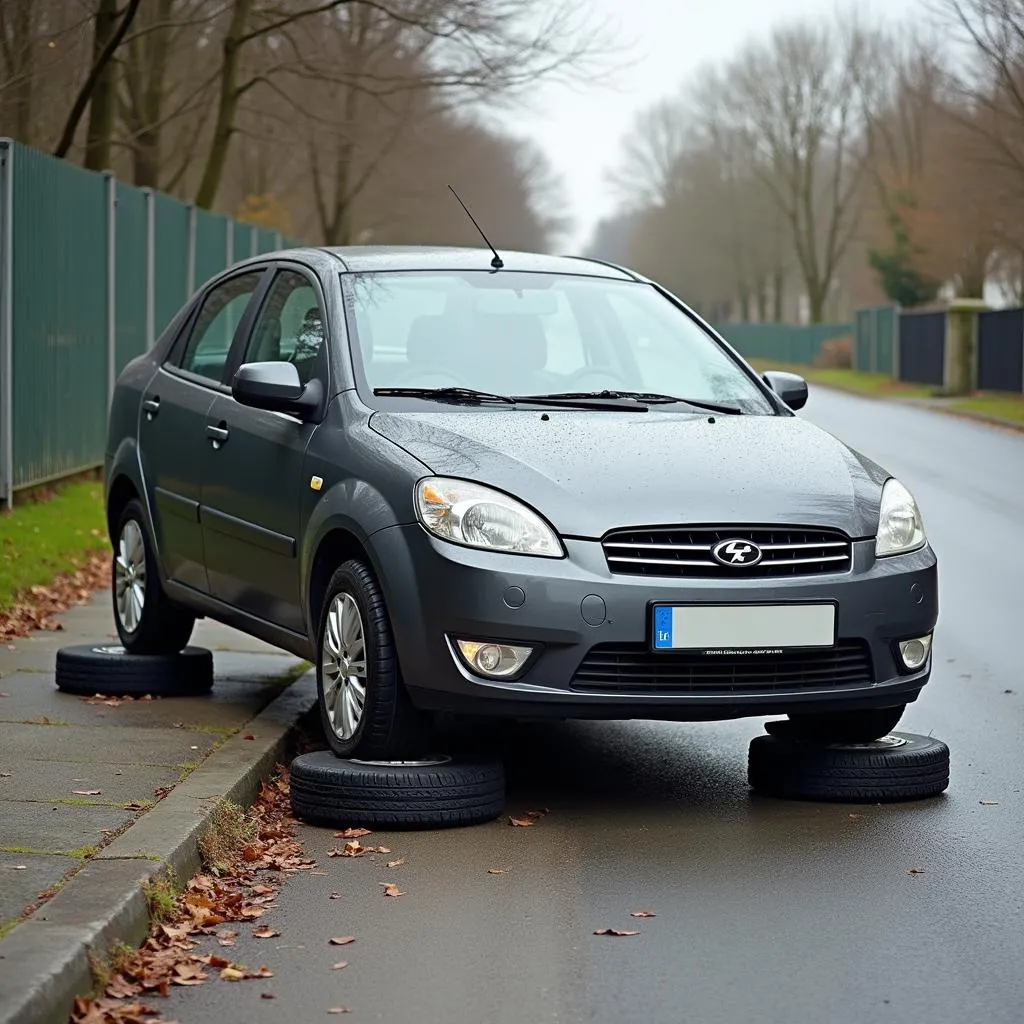Imagine this: you turn the key in your Honda, expecting the comforting hum of the engine, but instead, you’re met with silence. A quick glance at the dashboard reveals a glowing brake warning light. Not only is this inconvenient, but it can also be a sign of a potentially serious issue. Don’t panic! This comprehensive guide will walk you through the common reasons behind a Honda brake warning light coinciding with starting problems and equip you with the knowledge to get back on the road safely.
Understanding the Brake Warning Light
Before we dive into the specifics, it’s essential to understand what your Honda’s brake warning light is trying to tell you. This light serves a dual purpose:
- Brake System Malfunction: A lit brake warning light usually indicates a problem with your braking system, such as low brake fluid, worn brake pads, or a faulty brake sensor.
- Parking Brake Engaged: In some cases, the light might simply indicate that your parking brake is engaged.
However, when the brake warning light is accompanied by an inability to start your car, it points towards a more complex issue.
Common Culprits When Your Honda Won’t Start with the Brake Warning Light On
1. Low or Leaking Brake Fluid
The most common culprit is low brake fluid. Brake fluid is the lifeblood of your Honda’s braking system, transmitting the force from your foot on the brake pedal to the wheels, stopping your vehicle. When the fluid level drops too low, often due to a leak, it can trigger the brake warning light and interfere with the starting mechanism in some Honda models.
How to Check:
- Locate the brake fluid reservoir under the hood. It’s usually a translucent container with a black cap.
- Check the fluid level. It should be between the minimum and maximum markers.
What to Do:
- If the fluid is low: Carefully top it off with the recommended brake fluid for your Honda model (check your owner’s manual). If the light goes off and the car starts, you might have a slow leak that needs professional attention.
- If you notice a leak: Do not drive your car! Call a tow truck and get your Honda to a mechanic immediately.
2. Faulty Brake Light Switch
The brake light switch is a small but crucial component that activates your brake lights when you press the pedal. A malfunctioning switch can cause the brake warning light to stay on and, in some Honda models, prevent the engine from starting as a safety precaution.
How to Test:
While testing a brake light switch requires some mechanical know-how, you can easily check if it’s causing the starting problem:
- Have someone observe the brake lights while you press the pedal.
- If the brake lights don’t illuminate, the switch might be faulty.
What to Do:
Replacing a brake light switch is relatively inexpensive and straightforward. However, if you’re not comfortable working on your car, it’s best to consult a qualified mechanic.
3. Dead or Weak Battery
Sometimes, the most obvious answer is the right one. A weak or dead battery can lead to all sorts of electrical gremlins, including a lit brake warning light and an unresponsive engine.
How to Check:
- Try turning on your headlights. If they are dim or don’t turn on, your battery might be the culprit.
- Listen for a clicking sound when you try to start the engine, which can indicate a weak battery.
What to Do:
- Jumpstart your car: If the battery is weak, jumpstarting it might get your Honda running.
- Replace the battery: If jumpstarting works, consider getting your battery tested and potentially replaced.
4. Issues with the Starter or Ignition System
While less likely to be directly related to the brake warning light, problems with the starter motor or ignition system can prevent your Honda from starting.
How to Identify:
- A single click sound when turning the key usually indicates a starter issue.
- No sound at all might point towards the ignition switch or a wiring problem.
What to Do:
Diagnosing and fixing starter or ignition problems requires specialized tools and knowledge. It’s best to contact a qualified mechanic for these repairs.
When in Doubt, Consult a Professional
While this guide provides a starting point for troubleshooting, it’s crucial to remember that car repair can be complex. If you’re unsure about any step or the problem persists, it’s always best to err on the side of caution and consult a qualified mechanic specializing in Honda vehicles.
FAQs
1. Can I drive my Honda with the brake warning light on?
It’s never advisable to drive with a lit brake warning light. It indicates a potential problem with your braking system, putting you and others at risk.
2. How often should I check my brake fluid?
It’s good practice to check your brake fluid level at least once a month and before any long trips.
3. How long can I drive with low brake fluid?
Driving with low brake fluid is dangerous and can damage your braking system. If you notice your brake fluid is low, get it checked and topped off immediately.
4. How much does it cost to replace a brake light switch?
The cost varies depending on the make and model of your Honda, but it’s typically an inexpensive repair.
5. Can a bad alternator cause a brake warning light to come on?
While unlikely, a failing alternator can cause erratic electrical behavior, including triggering warning lights. If you suspect an alternator issue, get it checked by a mechanic.

